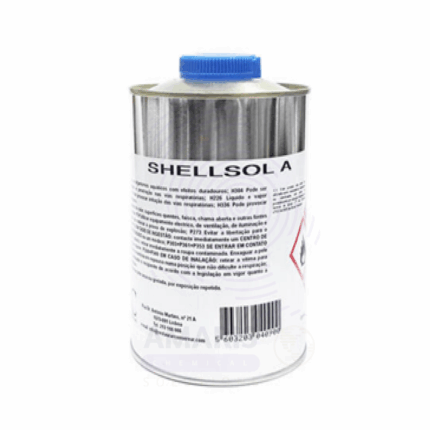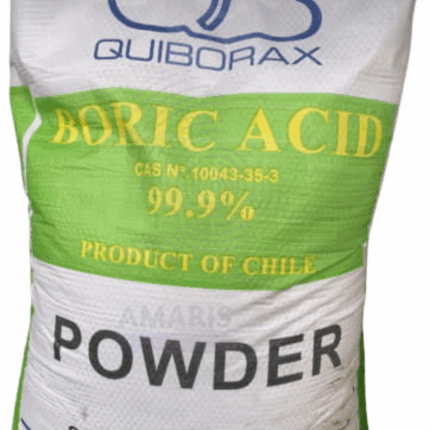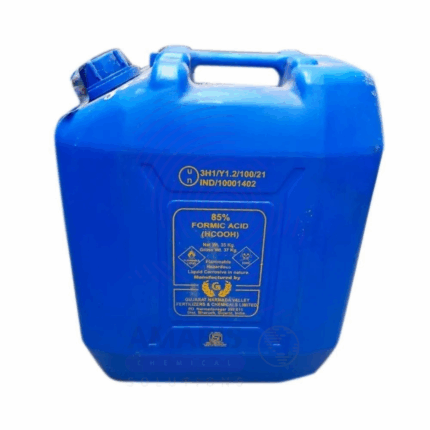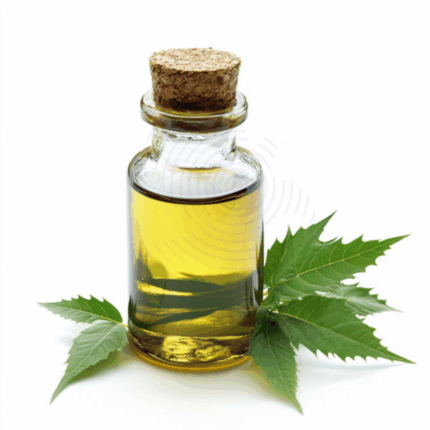“Aluminium Silicate” has been added to your cart. View cart
Oxyclozanide Vet BP
Whatsapp Order
Product Description
Oxyclozanide Vet BP is a veterinary anthelmintic effective mainly against liver fluke (Fasciola hepatica) and some intestinal flukes in ruminants such as cattle, sheep, and goats. It works by interfering with the parasite’s energy metabolism, leading to parasite death and improving animal health and productivity.
Description
Table of Contents
Toggle
Uses
Primary Uses
- Liver Fluke Control in Ruminants
- Treats acute and chronic infections caused by Fasciola hepatica.
- Reduces liver damage and associated clinical symptoms (anemia, weight loss).
- Improves productivity (milk yield, weight gain) in infected animals.
- Control of Intestinal Trematodes
- Effective against Paramphistomum spp. and other rumen flukes.
- Helps maintain gastrointestinal health and digestion efficiency.
- Veterinary Anthelmintic Therapy
- Used as a stand-alone treatment for fluke infections in cattle and sheep.
- Administered orally in doses according to veterinary prescription.
Secondary Uses
- Preventive Deworming Programs
- Used strategically during high-risk seasons to prevent heavy fluke infestations.
- Reduces pasture contamination by minimizing parasite egg shedding.
- Combination Therapy
- Occasionally combined with other antiparasitic agents (e.g., albendazole) for broader parasite spectrum coverage.
- Goat and Other Ruminant Use
- Off-label use under veterinary supervision for fluke treatment in goats and other ruminants.
- Improvement of Meat and Dairy Quality
- By controlling parasitic infections, it helps improve overall animal health and product quality.
- Use in Mixed-Parasite Infections
- Helpful in farms where liver fluke infections occur alongside other gastrointestinal parasites, as part of integrated parasite management.
- Research and Diagnostic Uses
- Used in veterinary research to study fluke resistance and pharmacodynamics.
KEY PRODUCT FEATURES
Key Attributes
Basic Identification Attributes
- Chemical Name (IUPAC): 2-[(4-Chlorophenyl)carbamoyl]-3,5-dichlorobenzoic acid
- Common/Trade Name: Oxyclozanide Vet BP
- CAS Number: 2272-92-8
- HS Code: 2933.79.90
- Synonyms: Oxyclozanide; Salicylanilide derivative
Physical & Chemical Properties
- Physical State: White to off-white crystalline powder
- Color & Odor: Odorless to mild characteristic odor
- Solubility: Slightly soluble in water; soluble in organic solvents such as ethanol and acetone
- Melting Point: Approximately 195–200 °C
Safety & Hazard Attributes
- GHS Classification: Not classified as hazardous; standard veterinary chemical precautions apply
- Toxicity: Low toxicity to mammals when used as directed
- Exposure Limits: Use protective equipment to avoid dust inhalation
Storage & Handling Attributes
- Storage Conditions: Store in a cool, dry, well-ventilated area away from direct sunlight
- Container Type: Supplied in sealed plastic or paper bags with liners
- Shelf Life: Typically 2 years if stored properly
- Handling Precautions: Avoid inhalation and prolonged skin contact; use gloves and dust mask if necessary
Regulatory & Compliance Attributes
- Complies with BP (British Pharmacopoeia) veterinary standards
- Approved for veterinary use under relevant national regulations
Environmental & Health Impact
- Biodegradability: Moderate biodegradability
- Ecotoxicity: Avoid release into the environment to prevent aquatic toxicity
- Bioaccumulation: Not expected to bioaccumulate
- Carcinogenicity/Mutagenicity: No evidence of carcinogenic or mutagenic effects
SAFETY HANDLING PRECAUTIONS
Safety Handling Precautions
- PPE Required: Gloves, dust mask, and safety goggles recommended during handling
- Handling Guidelines: Use in well-ventilated areas; avoid inhaling dust and contact with skin and eyes
- Storage Measures: Keep containers tightly closed and away from incompatible substances
First Aid Measures
- Inhalation: Move affected person to fresh air; seek medical advice if symptoms develop
- Skin Contact: Wash skin thoroughly with soap and water; seek medical attention if irritation occurs
- Eye Contact: Rinse immediately with plenty of water for at least 15 minutes; consult a doctor if irritation persists
- Ingestion: Do not induce vomiting; seek medical attention promptly
Firefighting Measures
- Fire Hazards: Non-flammable
- Extinguishing Media: Use water spray, foam, dry chemical, or CO₂ extinguishers as appropriate
- Special Precautions: Use standard protective firefighting gear
- Hazardous Combustion Products: May produce toxic fumes under fire conditions
Related products
Boric Acid
Boric Acid, chemically known as hydrogen borate or boracic acid, is a weak, monobasic Lewis acid of boron. It appears as a white, crystalline powder or granules that are odorless and slightly soluble in water. Boric Acid is commonly used in antiseptics, insecticides, flame retardants, and as a buffering agent in various industrial and pharmaceutical applications. Due to its mild antiseptic and antifungal properties, it is often used in ophthalmic, dermatologic, and other personal care formulations. It also plays a key role in glass and ceramics manufacturing as well as in agriculture.
Carbocisteine AJI 92
Carbocisteine AJI 92 is a high-purity pharmaceutical-grade amino acid derivative, chemically known as S-carboxymethyl-L-cysteine. It is a white to off-white crystalline powder with a slightly sulfurous odor and is freely soluble in water. Carbocisteine functions primarily as a mucolytic agent—reducing the viscosity of mucus and promoting expectoration in respiratory tract infections. The "AJI 92" specification refers to its compliance with the purity standards established by Ajinomoto's amino acid quality benchmarks, ensuring it meets stringent pharmaceutical-grade quality control for active pharmaceutical ingredients (APIs). It is widely used in oral syrups, tablets, and granules in both human and veterinary medicine.
Chloramphenicol Palmitate Micronised
Chloramphenicol Palmitate Micronised is a micronized, lipophilic ester derivative of chloramphenicol, designed for improved solubility and bioavailability compared to the parent drug. It appears as a fine, white to off-white powder with enhanced surface area due to micronization. This antibiotic is widely used for oral formulations, particularly pediatric suspensions, due to its palatability and controlled release properties. Chloramphenicol Palmitate exhibits broad-spectrum antibacterial activity against both Gram-positive and Gram-negative bacteria. Its ester form offers better stability and reduced bitterness, making it a preferred choice in pharmaceutical preparations.
Chlorpheniramine Maleate
Chlorpheniramine Maleate is a first-generation alkylamine antihistamine used primarily to relieve allergy symptoms by blocking H1 histamine receptors. It appears as a white or off-white crystalline powder, freely soluble in water and alcohol. Known for rapid onset and moderate duration of action, it’s widely formulated in pharmaceuticals. It also exhibits mild anticholinergic and sedative effects.
Formic Acid
Formic Acid (methanoic acid) is the simplest carboxylic acid, typically supplied as an 85% aqueous solution. It is a colorless liquid with a pungent, penetrating odor and strong acidic properties. Formic Acid naturally occurs in insect stings and plant secretions and is widely used in chemical synthesis, agriculture, textile, leather, and rubber industries. The 85% solution balances potency and safe handling for industrial applications. It serves as a preservative, antibacterial agent, and intermediate chemical in numerous manufacturing processes.
Indofil C-6
Indofil C-6 is a fine particle size wax emulsion designed primarily for use in the leather industry. It is a specialty product formulated to enhance embossing effects, improve surface feel, and enable easy release from embossing plates. Indofil C-6 imparts a silky, soft finish on leather surfaces, contributing to superior aesthetics and tactile quality. It is typically used in aqueous leather finishing systems and is suitable for both shoe upper leather and soft garment leathers. Indofil C-6 is stable, easy to apply, and compatible with most finishing auxiliaries and binders.
Kerol
Kerol is a synthetic kerosene-like solvent commonly used as a degreasing and cleaning agent in various industrial applications. It is a clear, colorless liquid with low aromatic content, moderate volatility, and excellent solvency properties, designed for effective removal of oils, greases, and contaminants from metal and mechanical parts. Kerol offers a balance of strong cleaning efficiency with improved safety and environmental profile compared to traditional kerosene.
Neem oil
Neem oil is a natural vegetable oil pressed from the fruits and seeds of the neem tree (Azadirachta indica). It is characterized by its strong, pungent odor and dark brown color. Rich in active compounds like azadirachtin, nimbin, and fatty acids, neem oil is renowned for its insecticidal, antifungal, and antibacterial properties. It is widely used in organic farming, cosmetics, and traditional medicine for its therapeutic and protective benefits.


 Preservatives(food)
Preservatives(food) Flavor Enhancers
Flavor Enhancers Acidulants
Acidulants Sweeteners
Sweeteners Antioxidants
Antioxidants Colorants(food)
Colorants(food) Nutraceutical Ingredients (food)
Nutraceutical Ingredients (food) Nutrient Supplements
Nutrient Supplements Emulsifiers
Emulsifiers
 Collectors
Collectors Dust Suppressants
Dust Suppressants Explosives and Blasting Agents
Explosives and Blasting Agents Flocculants and Coagulants
Flocculants and Coagulants Frothers
Frothers Leaching Agents
Leaching Agents pH Modifiers
pH Modifiers Precious Metal Extraction Agents
Precious Metal Extraction Agents
 Antioxidants(plastic)
Antioxidants(plastic) Colorants (Pigments, Dyes)
Colorants (Pigments, Dyes) Fillers and Reinforcements
Fillers and Reinforcements Flame Retardants
Flame Retardants Monomers
Monomers Plasticizers
Plasticizers Polymerization Initiators
Polymerization Initiators Stabilizers (UV, Heat)
Stabilizers (UV, Heat)
 Antifoaming Agents
Antifoaming Agents Chelating Agents
Chelating Agents Coagulants and Flocculants
Coagulants and Flocculants Corrosion Inhibitors
Corrosion Inhibitors Disinfectants and Biocides
Disinfectants and Biocides Oxidizing Agents
Oxidizing Agents pH Adjusters
pH Adjusters Scale Inhibitors( water)
Scale Inhibitors( water)
 Antioxidants(cosmetic)
Antioxidants(cosmetic) Emollients
Emollients Fragrances and Essential Oils
Fragrances and Essential Oils Humectants
Humectants Preservatives
Preservatives Surfactants(cosmetic)
Surfactants(cosmetic) Thickeners
Thickeners UV Filters
UV Filters
 Fertilizers
Fertilizers Soil Conditioners
Soil Conditioners Plant Growth Regulators
Plant Growth Regulators Animal Feed Additives
Animal Feed Additives Biostimulants
Biostimulants Pesticides (Herbicides, Insecticides, Fungicides)
Pesticides (Herbicides, Insecticides, Fungicides)
 Active Pharmaceutical Ingredients (APIs)
Active Pharmaceutical Ingredients (APIs) Excipients
Excipients Solvents(pharmaceutical)
Solvents(pharmaceutical) Antibiotics
Antibiotics Antiseptics and Disinfectants
Antiseptics and Disinfectants Vaccine Adjuvants
Vaccine Adjuvants Nutraceutical Ingredients (pharmaceutical)
Nutraceutical Ingredients (pharmaceutical) Analgesics & Antipyretics
Analgesics & Antipyretics
 Analytical Reagents
Analytical Reagents Solvents(lab)
Solvents(lab) Chromatography Chemicals
Chromatography Chemicals Spectroscopy Reagents
Spectroscopy Reagents microbiology-and-cell-culture-reagents
microbiology-and-cell-culture-reagents Molecular Biology Reagents
Molecular Biology Reagents Biochemical Reagents
Biochemical Reagents Inorganic and Organic Standards
Inorganic and Organic Standards Laboratory Safety Chemicals
Laboratory Safety Chemicals Specialty Laboratory Chemicals(Special Laboratory Equipment)
Specialty Laboratory Chemicals(Special Laboratory Equipment)
 Demulsifiers
Demulsifiers Hydraulic Fracturing Fluids
Hydraulic Fracturing Fluids Scale Inhibitors(oil)
Scale Inhibitors(oil) Surfactants(oil)
Surfactants(oil) Drilling Fluids
Drilling Fluids
 Dyes and Pigments
Dyes and Pigments Bleaching Agents
Bleaching Agents Softening Agents
Softening Agents Finishing Agents
Finishing Agents Antistatic Agents
Antistatic Agents
 Admixtures
Admixtures Waterproofing Agents
Waterproofing Agents Sealants and Adhesives
Sealants and Adhesives Curing Compounds
Curing Compounds Concrete Repair Chemicals
Concrete Repair Chemicals Anti-Corrosion Coatings
Anti-Corrosion Coatings
 Surfactants(cleaning)
Surfactants(cleaning) Builders
Builders Enzymes
Enzymes Solvents (Cleaning)
Solvents (Cleaning) Fragrances
Fragrances
 Electronic Chemicals
Electronic Chemicals Catalysts
Catalysts Lubricants
Lubricants Photographic Chemicals
Photographic Chemicals Refrigerants
Refrigerants Automotive chemicals
Automotive chemicals Pyrotechnic Chemicals
Pyrotechnic Chemicals
 Biodegradable Surfactants
Biodegradable Surfactants Bio-based Solvents
Bio-based Solvents Renewable Polymers
Renewable Polymers Carbon Capture Chemicals
Carbon Capture Chemicals Wastewater Treatment Chemicals
Wastewater Treatment Chemicals
 Pigments
Pigments Solvents(paint)
Solvents(paint) Specialty Coatings
Specialty Coatings Binders/Resins
Binders/Resins Additives
Additives Driers
Driers Anti-Corrosion Agents
Anti-Corrosion Agents Functional Coatings
Functional Coatings Application-Specific Coatings
Application-Specific Coatings
 Fresh Herbs
Fresh Herbs Ground Spices
Ground Spices Whole Spices
Whole Spices Spice Blends
Spice Blends Dried Herbs
Dried Herbs
 Leavening Agents
Leavening Agents Dough Conditioners
Dough Conditioners Flour Treatments
Flour Treatments Fat Replacers
Fat Replacers Decoratives
Decoratives Preservatives(baking)
Preservatives(baking)
 Plasticizers & Softeners
Plasticizers & Softeners Reinforcing Agents
Reinforcing Agents Adhesion Promoters
Adhesion Promoters Vulcanizing Agents
Vulcanizing Agents Antidegradants
Antidegradants Blowing Agents
Blowing Agents Fillers & Extenders
Fillers & Extenders Accelerators & Retarders
Accelerators & Retarders






















